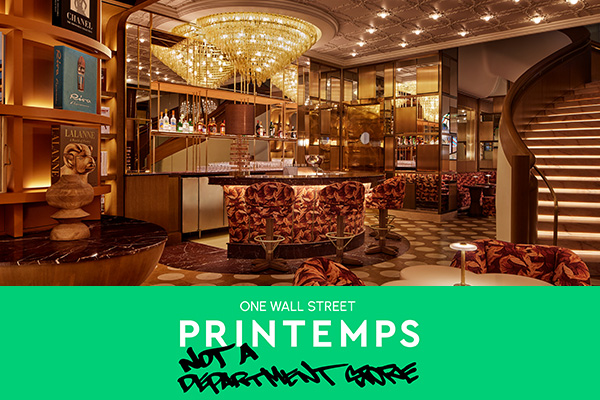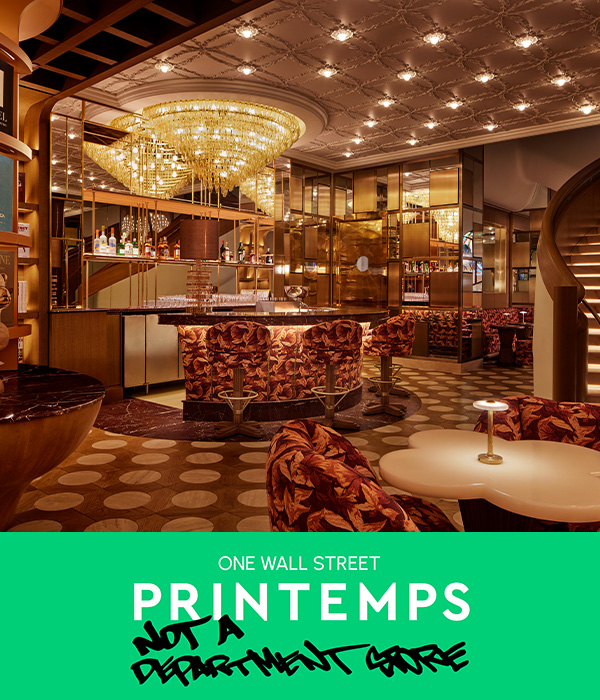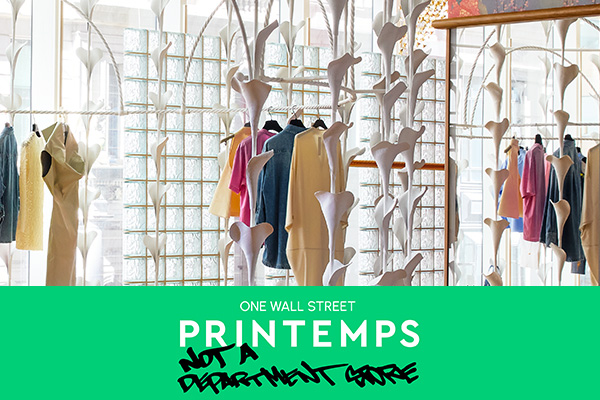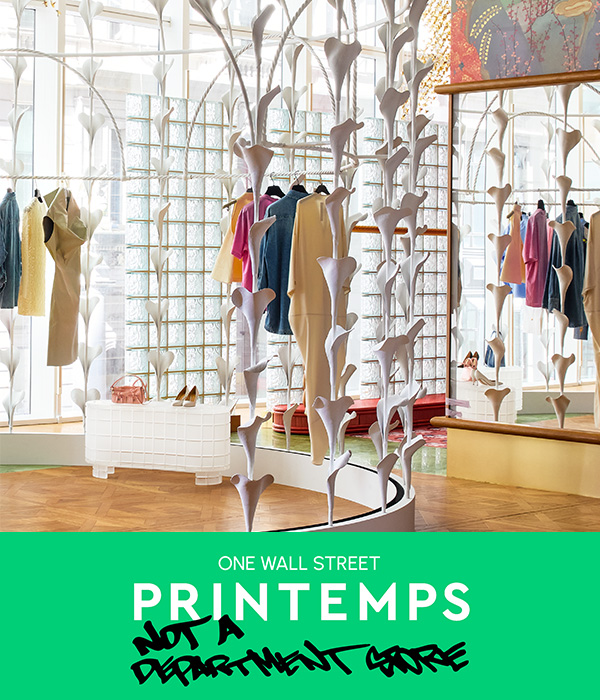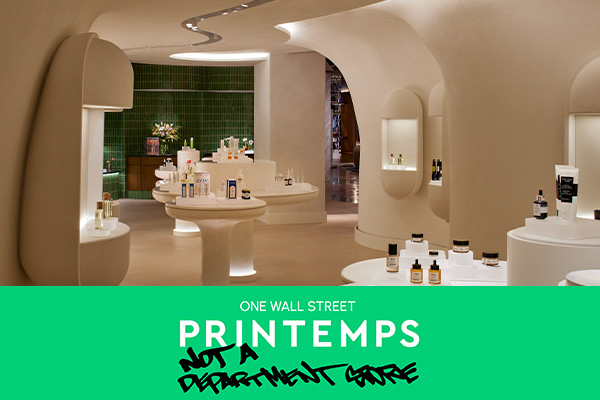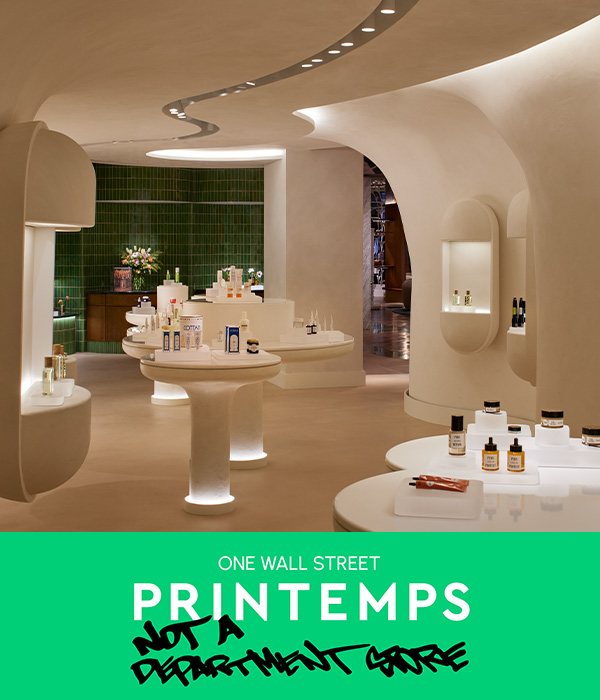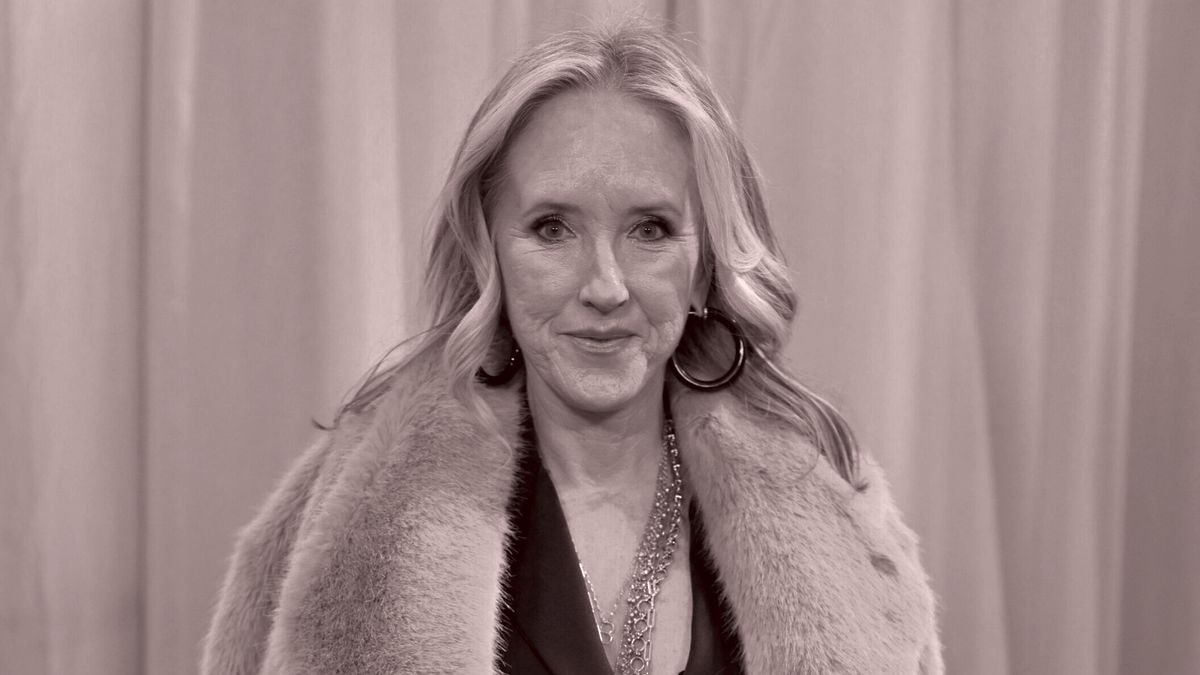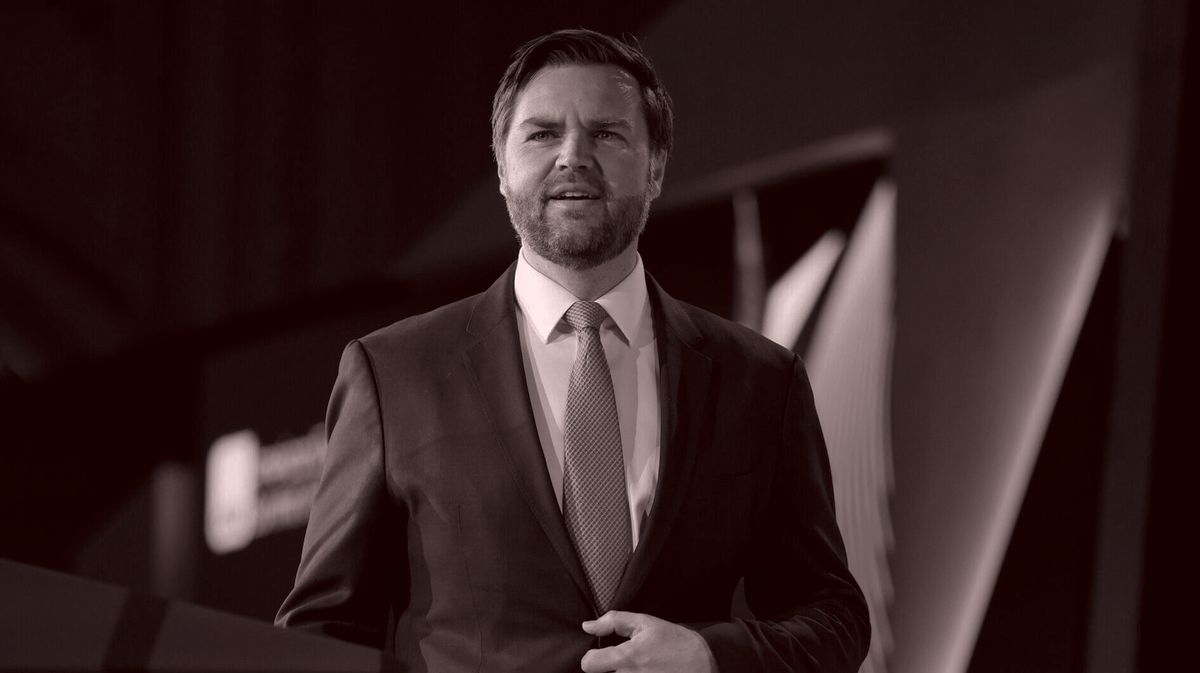Hi, and welcome back to Line Sheet. Sarah Shapiro is here with the
week that was in shopping, from the real meaning behind “Friends and Family” sales (I’ve always wondered!) to the introduction of yet another niche sporting brand. This time, it’s of the golfing variety, and brought to us by a serial entrepreneur you know. Up top, some details on that embezzlement case brought against Thirteen Lune co-founder Nyakio Grieco (the stuff she allegedly misspent company money on is pretty funny), a bit of A.I. news you actually need, and some
uplifting intel from Brooks Brothers, a brand that remains incredibly strong, in spite of itself.
🚨 Programming note: Today on Fashion People, my guest is Amanda Greeley, founder of Spence, the new tennis apparel label that Sarah wrote about earlier this week. Amanda lived out her early career in the D.T.C. trenches (remember the Lean Luxe Slack?) and is now using those
experiences (plus inherited knowledge from her mom, a career merchant who spent decades at Victoria’s Secret) to build something new. We also discuss “golf bros and tennis hos.” Listen here and here. (P.S., Indian Wells aficionado Dylan
Byers’s podcast with Racquet founder Caitlin Thompson makes a great double-header.)
🛍️ Also, Sarah has something for those of you with the Shoppies: Polka dots haven’t been so popular since Christian Lacroix was designing Patou. They’re vintage, they’re nostalgic, they’re exactly what worried-and-uncertain
shoppers (who aren’t looking for stripes) are after right now. Current Patou designer Guillaume Henry even threw back to his predecessor with a lightly retro bubble-hem dress. This season, Dôen—which was doing polka dots before polka dots were trendy—is proposing a straight-up 1950s prom look
(reminiscent of Jennifer Lawrence’s Dior couture gown from the 2024 Oscars), as well as a 1930s-style knock-around-the-house dress. Then there are the more novel pieces, like Jacquemus’s hooded anorak and Posse’s bloomer-style shorts. (Which, like, if you can pull those off, good on you.) The classic move, though, is the Comme des Garçons x Converse high-top. Those are basically a neutral.
Mentioned in this issue: Saks, Bloomingdale’s, Gucci, Burberry, Louboutin, Cos, Jon Buscemi, Malbon Golf, Goop, Gwyneth Paltrow, Gregg
Renfrew, Rachel Solomon, Nick Leith-Smith, Dôen, H&M, Mariam Naficy, Old Navy, and many more…
|
|
|
A MESSAGE FROM OUR SPONSOR: NOW OPEN
|
|
|

|
Sarah Shapiro
|
|
Three Things You Should Know…
|
- Thirteen Lune-acy: Beauty
founder Nyakio Grieco is being sued by shareholders in Thirteen Lune, the e-commerce beauty platform she co-founded with Patrick Herning in 2020. (Herning left the company in late 2024 as part of a restructuring.) According to court documents, Grieco is accused of allegedly turning the company card into her personal slush fund—$20,000 for family vacations, $15,000 on a Mexico trip, $13,000 on cellulite removal treatments, and $7,500 on tickets for Taylor
Swift’s European Eras Tour (not a bad price, actually).
Thirteen Lune, which raised money from Gwyneth Paltrow and Beautycounter founder Gregg Renfrew, as well BrainTrust and Fearless Fund, positioned itself as a disruptive beauty retailer that showcased brands founded by Black and brown entrepreneurs. In any case, Grieco’s alleged splurging on herself with company money wasn’t even half of it. According to the lawsuit, she plotted to sell the
company out from under the investors, who only learned of the sale to SNR Capital from news reports. Furthermore, as Thirteen Lune’s revenue was tanking, from $24 million to $7 million in 2024, shareholders alleged that Grieco was secretly muscling to become C.E.O. Allegedly, Grieco wiped out $4 million in shareholder equity by surreptitiously transferring all company assets to a new entity she would still control, leaving investors with worthless stakes in an empty shell while she continued
business as usual under the new company. (Grieco “strongly denies these allegations,” her lawyer Jeremy Stamelman told me. “We look forward to defeating plaintiffs’ defective claims at the earliest possible opportunity.”)
- When fashion meets A.I.: Lots of news on the artificial intelligence front this week. Mariam Naficy, the founder and C.E.O. of (invitation maker) Minted as well as the founder
and former co-C.E.O. of O.G. online beauty retailer Eve.com, has secured $25 million in a Series A for her newest venture, Arcade.ai, a D.I.Y. jewelry and home goods platform. The proceeds come from heavy hitters like Kirsten Green’s Forerunner, Marissa Mayer, Reid Hoffman, Karlie Kloss, and Christy Turlington Burns. Arcade.ai uses your cues to design products in about 20 seconds. The UX is unpolished, and the
designs don’t feel elevated, but perhaps there’s an opportunity for growth for custom homegoods. (You can already shop Hoffman and Kloss’s designs on the site.)
Meanwhile, H&M launched A.I. “model twins,” clearly having learned nothing from the backlash to Levi’s diversity-via-A.I. project in 2023. While H&M will pay models for their digital doppelgängers’ work, they’re avoiding hiring makeup artists, photographers, stylists, etcetera—cutting costs at the expense of creative professionals
by utilizing A.I.
However, the biggest winner on the A.I. front this week was Old Navy. The company partnered with Radar, a geolocation technology platform, to create an A.I.-powered RFID (radio-frequency identification) that tracks in-store inventory in real time. A.I. can clearly improve customer experience and data crunching. But can we just agree to leave the creative work to the designers, in all their messy glory?
- Brooks Brothers measures
up: In-store traffic at America’s oldest, WASPy-ish retailer has been up year over year, mostly thanks to the store’s suburban locations, which didn’t always exist. The return-to-office mandates, combined with the rise of wanting to look rich in a nostalgic, 1980s preppy way, probably have something to do with the company’s success. Credit could also be given to Michael Bastian, the creative director at Brooks Brothers since 2020, who had to clean up former creative
director Zac Posen’s taste misalignments. Brooks Brothers brand recently celebrated the 125th anniversary of its white button-down shirt—a design originally inspired by British polo players— with an ad campaign featuring Selma Blair, Lisa Birnbach (the editor and co-writer of The Official Preppy Handbook), and WNBA player Nneka Ogwumike.
Notably, shirting represents an outsize portion of Brooks Brothers’
business—approximately 40 percent of revenue, significantly higher than the industry standard of 20 to 30 percent. This category’s prominence is reflected in Brooks’ website navigation, where “Shirts” is positioned between the Men’s and Women’s sections. (Women often shop the men’s section.)
Does this all mean Brooks Brothers is back back? Remember that Brooks Brothers is a part of Catalyst Brands, a joint venture between the so-called vultures at Authentic Brands Group (they’d
push back on that description) and SPARC, which also includes beleaguered retailers JCPenney and Aéropostale. But no matter how successful this Bastian-led strategy ends up being, I’d argue that what these latest developments betray is that Brooks Brothers will always be around. People love it too much to let it go.
|
|
|
News and notes on the latest retail trends, from PGA chic to Miami’s design district.
|
|
|
My inbox (and yours, too), has become flooded with so-called “Friends & Family” offers—a marketing
gimmick that’s become retail’s worst-kept secret. Before 2008, exclusive Friends & Family sales events were actually… just that. When I was a buyer at Bloomingdale’s, we held this event twice a year, and we were each given 40 invitations for actual friends, family members, and vendors. My team and I would meet to divvy up sending the invites to each important vendor representative. We tossed our addressed invites into a cardboard box in the hall for the mailroom to send out, and
recipients would have to bring the card to the stores to get it scanned for the 20 percent discount.
|
|
|
A MESSAGE FROM OUR SPONSOR: NOW OPEN
|
|
|
I remember being in a meeting at Bloomingdale’s in 2008 when the phone rang with the big news: Saks was
allowing anyone to walk in and use the Friends & Family discount on all merchandise—even Gucci, Burberry, and Christian Louboutin—no questions asked. Quelle horreur! The economy was tanking, and Saks had resorted to desperate measures. All major department stores immediately followed suit, turning their “Friends & Family” sale into an everyone’s-welcome sale. It was the end of an era.
These days, F&F events now serve as strategic data-collection opportunities, and
preseason testing grounds. The H&M Group–owned chain Cos, for instance, launched their event by requiring the use of a unique discount code, available via certain influencers, along with ShopMy and LTK affiliate links. Now there’s a different code open to everyone—the point is to track who shops early, and observe the impact of the affiliate links versus organic consumption. Brands like
Nili Lotan have offered deep discounts at final sale, or demanded email signups in exchange for access to discount codes.
The evolution of F&F is, in some ways, the perfect distillation of the dissolution of retail as we once knew it. Pretty much every consumer is driven by deals these days, and so that is what stores must give them at every turn.
|
Jon Buscemi, the serial entrepreneur behind sneaker brands
Greats and Buscemi, as well as the Malbon Golf apparel brand, is stepping onto new turf with Redan, which is betting big on
the white space in premium golf attire. The made-in-Italy products are available exclusively to members only through their app. While the Masters moves millions in tournament-exclusive merch every April (seriously, enforceably exclusive: resellers face permanent bans), the broader golf apparel market remains underserved. There’s an argument as to whether most golfers care about what they’re wearing—beyond the desire to avoid looking like a slob— but clearly the TAM is big enough to urge
on the recent proliferation of options. D.T.C. and Instagram-native brands—like Sugarloaf Social Club, Random Golf Club, and the aforementioned Malbon—have leapt into this breach.
|
|
|
Redan’s luxury play is part of a larger fragmentation in sportswear, with single-sport boutique brands
flourishing as Nike’s once-dominant position weakens. (Of course, you can also search eBay and Etsy for gems from
MacGregor
and Top Flite.) The question for Buscemi is whether Southern golfers, who’d spend their last dollar on the latest Callaway pitching wedge before they’d put on a clean Peter Millar shirt, will embrace his high-end vision. What’s clear is that golf’s style spectrum now spans from Random Club’s community-focused
approach, where you can join their scramble tour events at courses across the U.S., to Redan’s elite positioning, with plenty of fairway for distinctive players.
|
This week’s channel check comes to you once again from Florida, a two-hour drive south of
last week’s Palm Beach zip code. In Miami, brand consultant and Substack author Rachel Solomon helped me understand the design district’s retail updates. Word is that John Elliott, the California menswear designer with
stores on Melrose in L.A. and in Soho, New York, is closing his Miami location. That was confirmed to me by someone at the store, who told me this Friday was the location’s last day, although an inside source reassured me the store was staying open for now. More news coming soon. If you are in Miami this weekend, stop by and send me a status report at SShapiro@puck.news.
Meanwhile, Manolo
Blahnik is betting big on Miami, with its third U.S. location, designed by longtime collaborator Nick Leith-Smith of Architecture + Design. The address caters to Miami’s fashion-literate clientele, who tend to spend a lot of time at the beach, but also at the club. Its focus on heels and sandals demonstrates an understanding of Miami’s year-round resort lifestyle and appreciation for higher heels. The Miami Manolo Blahnik has over a dozen exclusive shoes, including some vintage
reissues—like the 1991 Maysale that was designed for an Isaac Mizrahi fashion show—with bridal and men’s collections on the second floor.
There are more changes coming to the Miami retail scene. Balmain is claiming Valentino’s former spot, and Prada is in a temp space during the renovation of a new flagship. After all, Miami is important to these brands. The city—which developer Craig Robins has downright transformed over the past decade through his
persistent pursuit of making the Design District the epicenter of luxury consumption—is both the first stop for South American customers coming to the U.S. and home to a lot of rich people who grew tired of San Francisco. And they’re not going back—at least for now…
|
Have a great weekend,
Lauren
P.S.: We are using affiliate links because we are a business.
We may make a couple bucks off them.
|
|
|
Need help? Review our FAQ page or contact us for assistance. For brand partnerships, email ads@puck.news.
You received this email because you signed up to receive emails from Puck, or as part of your Puck account associated with . To stop receiving this newsletter and/or manage all your email preferences, click here.
|
Puck is published by Heat Media LLC. 107 Greenwich St, New York, NY 10006
|
|
|
|


